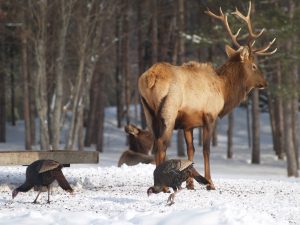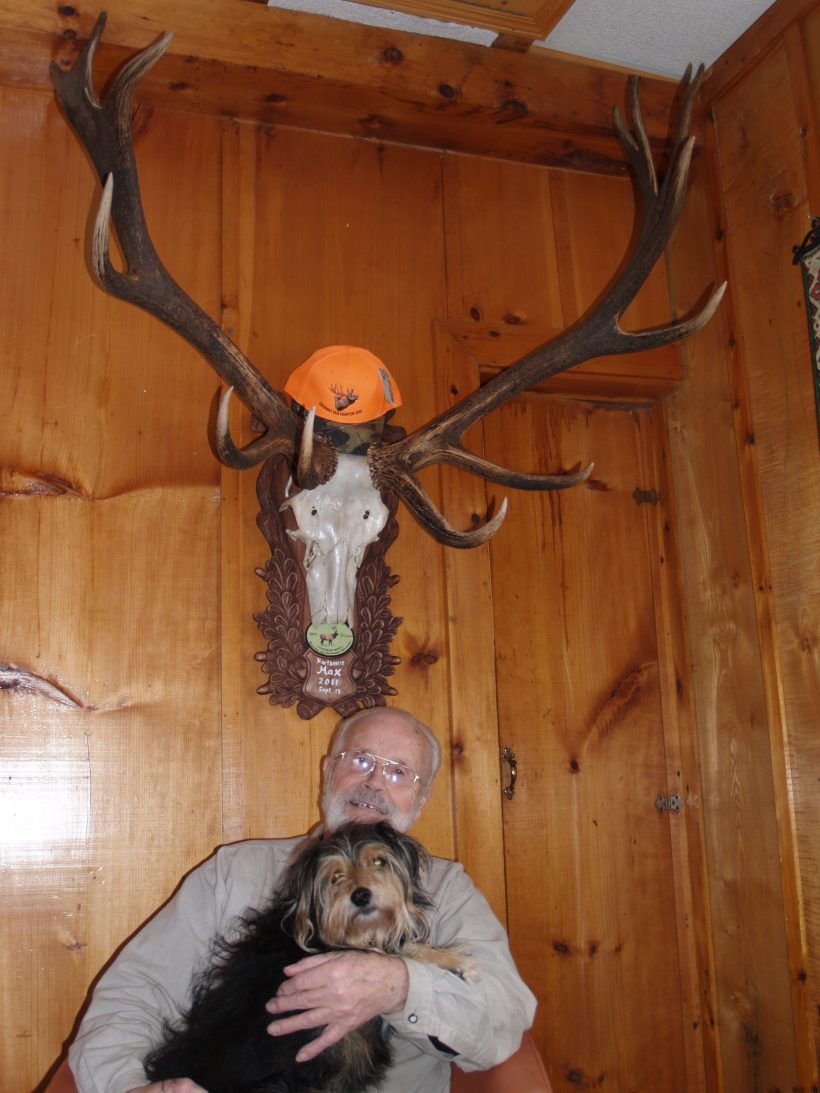INTRODUCTION or REINTRODUCTION?
When Jim Lamorre and his son-in-law Steve Fox went bass fishing in 1977 little did they imagine that they would be part of the answer. The question? Were eastern Elk indigenous to the Bancroft area? This focused question was key to bringing the elk from Alberta. Nay sayers argued against introducing animals that never previously existed in the area. The elk committee argued that elk had previously existed here before being extirpated by hunting and habitat alterations. Older residents anecdotally recalled elk in the area. One recalled picking blueberries as a child in the Coe Hill area. It was a common practice for families to pick wild fruit for winter table fare. On one such outing Eugene Roy recalls seeing such an elk. These elk were probably remnants from a restoration effort in the 1930’s and 1940’s. Unfortunately, most of these animals were subsequently killed due to unfounded rumours that they were passing a parasite, the giant liver fluke, on to cattle.
However, anecdotal evidence is one argument but hard scientific fact is another. The nay sayers wanted hard scientific fact.
While fishing Limestone Lake, 25 km east of Bancroft, Jim Lamorre and Steve Fox caught more than bass on one fishing expedition returning with what they thought was a moose antler that Fox had retrieved from the bottom of the lake. At first glance Fox thought it was a piece of driftwood. For several years thereafter the six-tined antler rested outside the cottage leaning against a tree. Porcupines had attempted to gnaw upon it without much success due, apparently, to its well-preserved state. The high lime content of the lake had contributed to its petrified condition.
When John O’Donnell, co-chair of the North Hastings Elk Restoration Project, was in Trenton retrieving a bull elk that had been killed on the 401 by a tractor trailer Lamorre , by pure chance, happened by. Lamorre knew of the reintroduction project that had already released elk less than 5 km from his cottage. When he saw the antler he commented to O’Donnell, “I have an antler, just like that one, except it’s a lot bigger.” He asked O’Donnell if he would be interested in seeing it.
Eventually, the antler was sent to Kevin Seymour, Assistant Curator of Vertebrate Paleontology at the Royal Ontario Museum (ROM), who confirmed that it was an elk antler dating anywhere from 50 years to the last ice age 10,000 years ago. A previous failed attempt to re-introduce elk west of Bancroft had occurred in the 40s and 50s. This may be the explanation regarding berry picking sightings mentioned earlier.

Eventually, the isotrace radiocarbon calibration report of March 28, 2002, of Dr. Roelf P. Beukens of the University of Toronto Iso Trace Radiocarbon laboratory confirmed that the antler radiocarbon dated between 1435 A.D. and 1525 A.D. ( It would be over a century before Champlain would make his Algonquin Highlands appearance.) This confirmation placed Eastern Elk historically at virtually the same location as the Bancroft release area prior to the first European settlements.
“Having this find confirmed as being 500 years old makes our efforts here even more rewarding,” said O’Donnell. “It’s very satisfying to witness the reintroduction of a species to what was once its natural habitat.”
Jim Lamorre’s family had homesteaded on this tract of land in the late 1800’s and he said: “Our grandfather always said he remembered the elk around Limestone Lake and it is nice to have the scientific proof of this.”
Settlement, over harvesting and habitat destruction contributed to the extirpation of elk in the late 1800’s. Presently, the genetically similar elk from Alberta’s Elk Island National Park that have been reintroduced number approximately 130 animals in 2002.
For over 500 years the elk antler lay in Limestone Lake. Beukens commented: “It was a good place for it to survive because of the limestone base of the lake, which preserved the collagen protein used for carbon dating and its light colour and condition.”
“It wouldn’t have lasted if it fell into an acidic lake or in the acidic soil of that area,” he added.

